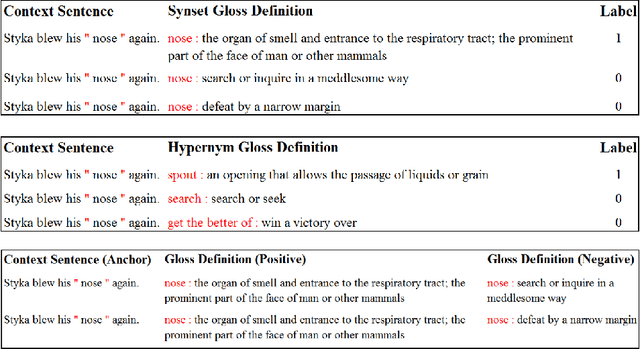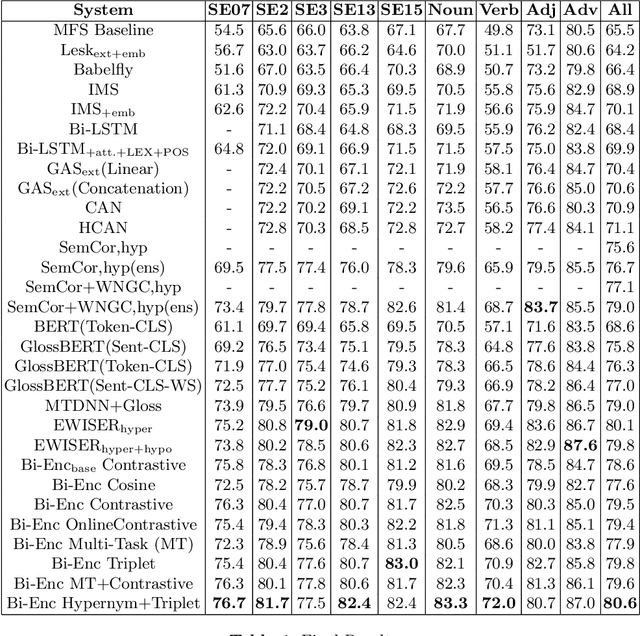Training Bi-Encoders for Word Sense Disambiguation
Paper and Code
May 21, 2021



Modern transformer-based neural architectures yield impressive results in nearly every NLP task and Word Sense Disambiguation, the problem of discerning the correct sense of a word in a given context, is no exception. State-of-the-art approaches in WSD today leverage lexical information along with pre-trained embeddings from these models to achieve results comparable to human inter-annotator agreement on standard evaluation benchmarks. In the same vein, we experiment with several strategies to optimize bi-encoders for this specific task and propose alternative methods of presenting lexical information to our model. Through our multi-stage pre-training and fine-tuning pipeline we further the state of the art in Word Sense Disambiguation.
* 15 pages, 5 figures. Accepted at the 16th International Conference on
Document Analysis and Recognition ICDAR 2021
 Add to Chrome
Add to Chrome Add to Firefox
Add to Firefox Add to Edge
Add to Edge